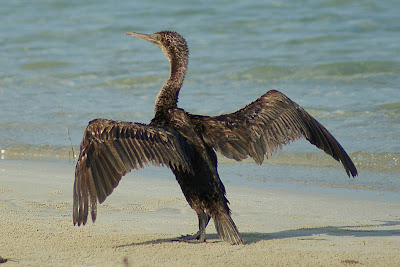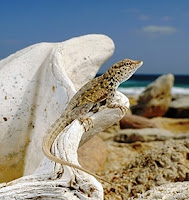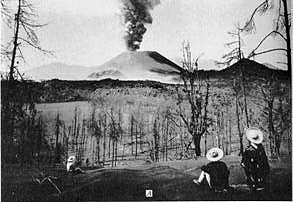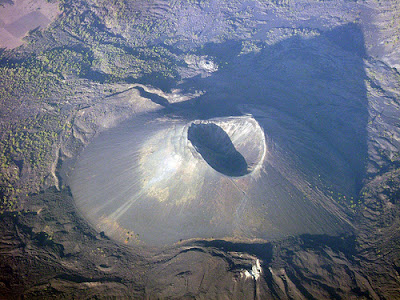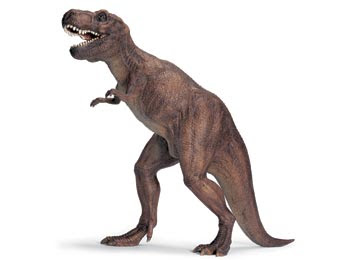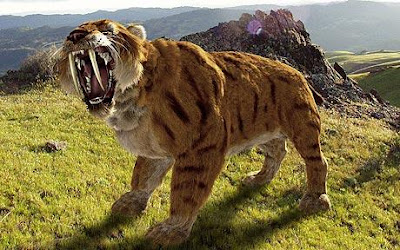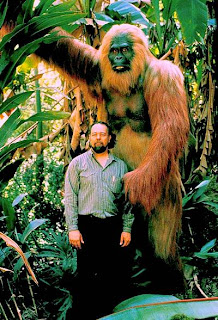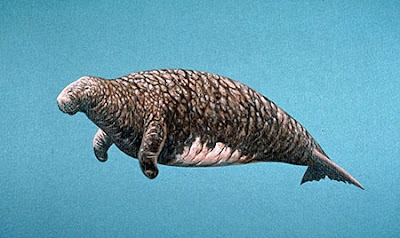The earth has always been home to incredible creatures. This is a list of the 10 most amazing animals which once ruled the planet earth.
Tyrannosaurus Rex
Tyrannosaurus, meaning the "tyrant lizard, is probably the best known of all the dinosaurs. It lives in our imagination, with its massive jaws and threatening figure, as the perfect monster. That is probably why we named it "Rex", meaning the "King".
The
Tyrannosaurus Rex, or T. Rex for short, wandered the earth about 65 million years ago. With a height of upto 16.6 ft and weighing at a massive 7 tons, the T. Rex was the largest land carnivore ever existed. Fossils of T. Rex have been discovered in rock fossils in North America, dating back to the
Cretaceous Period. The last T. Rex died out 66 million years ago, much earlier than any human feet trampled land.
Sabre Toothed Tiger
The Sabre Toothed Tiger was one of the most feared enemies of prehistoric man. The sabre toothed tiger, or the sabre toothed cat, owe its name to the two magnificent large canines which extend from its mouth, making it look even more savage than modern tigers. These canines could grow to a length of about a foot.
The sabre toothed tiger roamed the earth about 40 million years ago. It was much bigger then its modern descendants and had a bear like build. It was an excellent hunter, hunting giant animals including mammoths, sloth, even prehistoric men. The
sabre toothed tiger went extinct about 10000 years ago, at the end of the last ice age. Although the definite causes are unknown, it is believed that climatic changes and disappearance of prey spelled its doom.
Gigantopithecus
The ancient forests of India, China and Vietnam, were home to one of history's most special apes. The
Gigantopithecus, meaning "the gigantic ape" is the largest monkey or primate ever lived. With a height of 10 ft and weighing about half a ton, the Gigantopithecus was about 3 to 4 times larger than modern gorilla.
It ruled the forests around 500,000 years ago. The giant ape lived on bamboos, occasionally feeding on seasonal fruits. It died out around 10,000 years ago as a result of climatic changes.
Terror Bird
The Titanis Walleri is probably the most fearful bird of all time. 28 million years ago, America was a ferocious place. A land ruled by fearful predators. The setting staged the evolution of a giant flesh eating bird, the
Titanis Walleri or the terror bird.
The terror bird stood at a remarkable 6 ft and weighed as much as 300 pounds. They were blessed with large hatchet like bills which tore apart mammals, reptiles and other birds.
Fossils of these large prehistoric birds of prey have been collected from a former sinkhole in the Santa Fe River, Gilchrist County,
Florida. No terror bird fossils were younger than 2 million years, suggesting it became extinct early in the
Pleistocene period.
Tasmanian Tiger
The Thylacine was the largest known carnivorous marsupial.
Thylacine, also known as the Tasmanian tiger or the Tasmanian wolf, was native to Australia and Tasmania. It is thought to have become extinct in the 20th century largely due to over hunting by the European settlers in the area. Other factors which contributed to its extinction includes diseases, introduction of dogs and habitat destruction. It was the last member of its genus, Thylacinus.
Dodo
The phrase: "As dead as a Dodo", is used for something that has become extinct. But what exactly is a Dodo? The dodo is a big fat bird which once roamed the islands of Mauritius in the Indian ocean. The dodo was a large, flightless bird which stood at around 1 metre. It had a large hooked beak, lived on fruits and nested on the ground. The
dodo was hunted to extinction by sailors who landed on the islands. Since, the bird was found no where else, it soon died out and became extinct in late 17th century.
Pyrenean Ibex
The Pyrenean Ibex roamed the plains of France and Spain, until its extinction in the year 2000. It is one of the most famous of the recently extinct animals. They were numerous a few centuries ago, but their numbers started falling after 1900 due to intensive hunting. In 1980, about 30 pyrenean ibex were reported to exist. Then on 6 January 2000, the last specimen, a female named Celia, was found dead and the
pyrenean ibex was officially declared extinct.
But this was not the end. Due to extensive cloning, scientists were able to brought them back to life, the first animal ever to be resurrected through cloning. Unfortunately the cloned specimen couldn't survive for more than 7 minutes due to lung failure.
Megalodon Shark
Megalodon, meaning "big tooth" in Greek, is an extinct shark that ruled the seas around 16 million years ago. The massive creature was twice the size of the modern great white shark and was probably the top predator of the time. It was blessed with a ferocious 2 metre wide jaw laced with teeth 21 cm long which allowed it to hunt large preys including whales and even dinosaurs.
The great shark went extinct around 1.6 million years ago during the
Cenozoic Era. While the exact causes remain unknown, climatic changes are believed to play a crucial role.
Stellar Sea Cow
The Stellar Sea Cow is named after George Stellar, the man who first saw it in the waters of Commander Islands in 1741. The
Sea Cow was related to manatee and dugong, only much larger in size. The sea giant grew to a length of 8-9 metres and weigh upto 3 tons.
With its large body, small head, stout limbs and whale-like tail, the sea cow resembled modern seals. The creature was once widespread in the areas around the north Pacific coast but human settlement in the area resulted in rapid decrease in its numbers and the last specimen died in 1768. This makes it one of the more recently extinct animals in our list.
Haast's Eagle
The Hasst's Eagle is the largest raptor ever known to mankind. Weighing as much as 15 kg, the Haast's eagle had a wingspan of more than 9 ft. It was estimated to attack its prey at velocity of upto 80 mph, ripping them with its large ferocious beak. The Haast's eagle was the ultimate predator of the area, preying on large creatures such as the Moa and even humans.
The reign of the giant raptor continued till 1400, until the Maori people settled in the area who hunted the
moa, it's chief prey, to extinction. As a result, the
Haast's eagle soon died out.
Further Reading:There is no end to history. If you want to learn more about these extinct animals and many other ones, then this encyclopaedia can be your complete answer. It covers everything from the first microscope sea creatures to the Tasmanian wolf. Each chapter covers the animals themselves, the processes that brought them to extinction, and the modern scientific discoveries that reveal their lost words.
Buy it: Dinosaurs to Dodos: An Encyclopedia of Extinct Animals
 Socotra is a collection of 4 islands cut away from the rest of the world about 6 million years ago. It is one of the most isolated places on earth. Socotra's long isolation and fierce climate has given birth to a unique variety of endemic flora, giving Socotra the distinction of being 'the most alien looking place on earth'.
Socotra is a collection of 4 islands cut away from the rest of the world about 6 million years ago. It is one of the most isolated places on earth. Socotra's long isolation and fierce climate has given birth to a unique variety of endemic flora, giving Socotra the distinction of being 'the most alien looking place on earth'.








